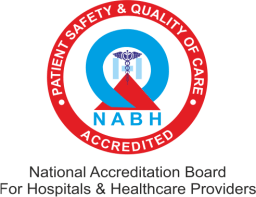
PREPARING YOURSELF FOR A POST KNEE REPLACEMENT SURGERY RECOVERY
Knee Replacement Surgery
In a popular procedure known as a knee replacement (arthroplasty), an artificial joint is used to replace a knee that has been injured, worn out, or infected.
Although knee replacements can be performed for adults of any age, the majority are done on patients between the ages of 60 and 80.
While the knee joint is worn out or damaged, it is typically required to have knee replacement surgery because this reduces your mobility and causes pain even when you are at rest.
The most typical justification for having a knee replacement is osteoarthritis, rheumatoid arthritis, haemophilia, gout, irregular bone growth, Knee injury & death of bone due to loss of blood supply.
There are 2 primary surgical specialties:
When both sides of your knee joint are replaced in a total knee replacement.
And when only one side of your joint is replaced during a smaller operation is known as partial (half) knee replacement.
Conventional Surgery & Robotic Surgery
The recovery time/period will also depend on what type of knee surgery you opt for, a Conventional Surgery or an Advance Surgery (Robotic Surgery)
A Conventional Surgery will surely have an extended time for recovery and will have more restrictions during the recovery period than robotic surgery.
Robotic Surgery can be future classified into PASSIVE ROBOTIC SURGERY, SEMI-ACTIVE ROBOTIC SURGERY & FULLY ACTIVE ROBOTIC SURGERY. This classification is carried out by the type of ROBOTIC TECHNOLOGY (ROBOT) used in the surgery.
The post-surgery recovery time for conventional knee surgery and the recovery time for a knee surgery carried out by a Fully Active Robot Like CuVis are leaps and bounds.
Opting for knee replacement surgery with a Fully Active Robotic System like CuVis will benefit you in the following ways.
- Best post-surgery outcomes
- Optimum surgical precision
- A less intrusive nature means less blood loss and pain that goes along with it.
- Quicker recovery and shorter hospital stays
- Minimal human intervention (best suited to when Covid is back on a rise.)
So, you should opt for an Advance Robotic Knee Surgery over a Conventional Knee Surgery.
Preparing Yourself For A Post Knee Surgery Recovery.
Whether you go for a Conventional Knee Replacement Surgery or an Advance Fully Active Robotic Knee Replacement surgery, Here are a few tips on preparing yourself for a better and result-oriented post-surgery recovery.
A. Install Fall Protection Tools
Although you won’t be walking much after your knee surgery, you’ll inevitably need to move around your home. A crucial component of your recuperation is walking.
Fall risk might be heightened by a lack of balance and a need for space. Other preventive actions, besides decluttering, include:
Installing a railing in the shower or bathtub and next to the toilet, covering outside steps with ramps adding texture to slick flooring, wearing non-skid socks, and using a walking aid until you’re steadier.
B. Establish a recuperation area.
You’ll probably spend time sitting down in the first few weeks after leaving the hospital because of your limited mobility.
Establish a resting spot with a firm chair (often in the living room). It should be simple to sit in and get out of the chair if it is raised sufficiently. To prevent you from falling, it should have arms and a sturdy back.
You should choose a recliner since it allows you to raise your legs. If your chair doesn’t recline, put a strong footrest in front of it. Some chairs have a mechanism that tilts you slightly forward to make getting up simpler.
C. Seek assistance
It may be more difficult to move around and do daily tasks after knee surgery.
During your early recuperation time, think about inviting a friend or family member to remain with you, or make arrangements for in-home care.
Having an additional set of hands-on hands is always a good idea, even if you live with your spouse or another family member.
D. Physical Exercise
Frequently, you will be introduced to the exercises recommended by your doctor for the first time at a routine physical therapy appointment. This enables you to try the exercise while being watched by a licensed physical therapist who can keep an eye on your knee and make sure that it doesn’t agitate it or cause any other issues. You must make an effort to attend every physical therapy appointment if you want to make a full recovery. Your best chance for a quick recovery is to do this.
E. Other Tips To Make It Easy For Yourself For Recovery
- Have a bed that is low enough so that when you sit on the edge of the bed, your feet are on the floor.
- If you can, set up your bed on the ground floor. Although a hospital bed may not be necessary, your mattress should be firm.
- Make sure you can access everything you need without having to bend over too much or stand on tiptoes.
- Stock a cabinet between your waist and shoulder level with food and other essentials.
- Keep your phone on you always or nearby so in case of any emergency you can call for help.
F. Takeaway
The more your home and living area are prepared, the better you will be able to manage throughout recuperation and the easier it will be to deal with problems and complications if they develop.
If you do not plan ahead of time, you may encounter additional obstacles upon your return. This may raise the risk of infection, sadness, and anxiety.
Talk to your doctor about all of your post-op recoveries needs to ensure you haven’t overlooked anything.
There is no such thing as over-preparation. The better organized your home, the higher your chances of a quick recovery from knee surgery.


